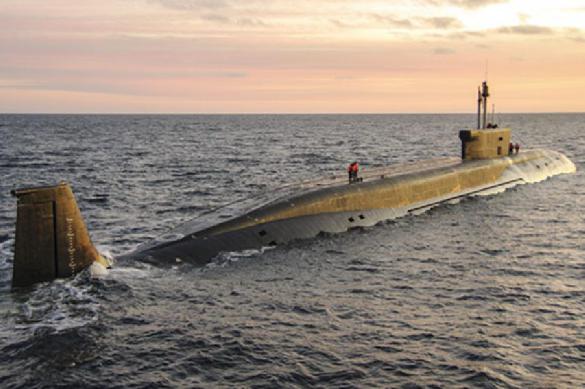[ad_1]
The web isn’t simply within the cloud — it’s additionally on the backside of the ocean. Your on-line information is ferried internationally by a crisscrossing community of lots of of undersea cables, a handful of that are over 12,000 miles lengthy and stretch between continents. In complete, there’s roughly 1.3 million miles of subsea web cable mendacity on the backside of the ocean — sufficient to encircle the globe 52 occasions. So what occurs if a pure catastrophe damages a few of these cables?
In accordance with Dr. Sangeetha Jyothi, a professor at College of California Irvine, such an occasion may probably create an “web apocalypse.” And as if that’s not scary sufficient by itself, her analysis additionally means that this scary state of affairs may come to cross someday within the subsequent twenty years. She argues {that a} uncommon photo voltaic superstorm is prone to cripple components of the worldwide web infrastructure and trigger an outage that might final for months.
However there’s additionally some excellent news: We’d have the ability to keep away from this disastrous future if we put together for it correctly.

Making a cosmic disaster
The floor of the solar is an especially risky place. Because it churns and sputters like an enormous ocean of white-hot plasma, photo voltaic flares typically get belched out from the floor, flinging electromagnetic radiation out into house. Fortunately, most of those ejections aren’t an issue for our planet, both as a result of they aren’t sufficiently big to pose a big risk, or they’re simply aimed within the fallacious course. However occasionally — roughly as soon as per century or so — we get unfortunate, and a very large “photo voltaic superstorm” erupts in our course.
Fortunately, Earth’s ambiance deflects and shields many of the radiation created throughout a photo voltaic superstorm, stopping it from harming us. However the accompanying electrically charged matter can work together with the earth’s magnetic discipline and (along with creating gorgeous auroras) disrupt all the pieces from satellite tv for pc communications to energy grids to — as Jyothi argues — our undersea web cables.
The chance of such an incident is comparatively low (1.6% to 12% per decade, to be exact), however there’s additionally a extreme dearth of knowledge on these occasions, since they not often happen in a predictable method that’s straightforward for scientists to investigate. Nevertheless, since the previous couple of many years have been comparatively quiet, Jyothi’s predictive fashions counsel we may witness one other large photo voltaic storm inside the subsequent 20 to 25 years.

It’s been precisely a century for the reason that final time a big photo voltaic disturbance hit Earth in 1921. Often called the New York Railroad superstorm, it blew electrical fuses and led to widespread outages in railroad and undersea telegraph techniques. The upside was that this occurred earlier than the arrival of contemporary connectivity, and because of this, the affect on the world was considerably restricted. But when a photo voltaic storm of this magnitude have been to happen right this moment, scientists estimate that the ensuing harm may depart 20 million to 40 million individuals with out electrical energy for as much as two years, and the financial affect may attain trillions of {dollars}.
Extra photo voltaic storms of a lot decrease depth have occurred for the reason that final large one in 1921. One in all them, in 2003, threw Japan’s house program into disarray. One other, in 1967, practically began a nuclear conflict as a result of the USA believed Russia had interfered with its missile detection techniques when, in truth, it was attributable to a photo voltaic bathe.
Our delicate worldwide net
So how precisely may these photo voltaic superstorms create points for the trendy web? Undersea web cables are resistant to any electrical harm a photo voltaic storm may inflict since they shepherd throughout alerts within the type of gentle, not present. The issue is on the interval of about 30 to 90 miles, the place they’re geared up with repeaters to amplify these alerts over lengthy distances. These repeaters are susceptible to electrical disruptions, and if even certainly one of them malfunctions, it may theoretically deliver down all the undersea route.

For the reason that fashionable web has by no means been stress-tested for a photo voltaic storm, there’s additionally little information on how these modules may get well. The excellent news is that it’s unlikely to break all of the submarine cable routes.
The results of a photo voltaic storm can be most outstanding nearer in areas to the Earth’s magnetic poles. So, as an illustration, Asia faces much less danger since Singapore, a hub for a variety of undersea cables that lies on the equator. Due to this fact, although a number of areas may not expertise a blackout, they could possibly be remoted from continents and international locations that do. The U.S., for instance, could possibly be disconnected from Europe.
The web in a catastrophe
Fortunately, the web is basically constructed for resilience. If repeaters do fail, the net is able to mechanically rerouting the site visitors by a special, nonetheless operational route, says Dr. Umakishore Ramachandran, a pc science professor on the Georgia Institute of Expertise in Atlanta.
“There may be sufficient redundancy within the core of the community,” Ramachandran informed Digital Traits, “that such failures are acknowledged on the increased ranges of the community stack to reroute flows round failed routes.” At most, your web speeds will lower because of the spike in congestion, however it’s unlikely “to be catastrophic,” he added.
The larger trigger for concern, says Ross Schulman, a senior technologist on the New America’s Open Expertise Institute, is the “edges of the community.” This contains, as an illustration, the web connections that we and smaller companies depend on. If sufficient routes are broken, the remaining bandwidth could also be restricted to important companies like well being care, leaving residential prospects at nighttime and with out digital communications for weeks. Plus, satellite tv for pc communication and instruments like GPS techniques will go offline, taking away with them a crucial backup in catastrophe conditions.

The world isn’t any stranger to web outages and blackouts in a pure catastrophe. Hurricanes, earthquakes, and extra have beforehand plunged cities into darkness for days on finish. And similar to how individuals coped throughout these occasions, Ramachandran believes edge computing could possibly be the reply in a photo voltaic superstorm.
Native, decentralized networks have beforehand allowed communities to remain in contact and basically construct their very own internets to speak updates. Comparable tasks may come to the rescue, no less than briefly, within the occasion of an “web apocalypse.” Nevertheless, if this theoretical web apocalypse have been to final for weeks or months, governments would want to show to different options that might restore the worldwide web, particularly in harder-hit areas. When a magnitude 8.0 earthquake struck Peru’s distant areas, an internet-beaming balloon from Google’s now-defunct Loon division was capable of present service in about 48 hours.
There’s additionally an actual probability that electrical grids may exit for weeks, and due to this fact all our web infrastructure merely wouldn’t have any energy. In such a state of affairs, Schulman says, “different options similar to wi-fi meshes like Commotion or Google’s Loon may rise as a versatile different.”
Consultants concern a photo voltaic superstorm is simply one of many many pure catastrophes that threaten the web and the economies dependent upon it. As local weather change escalates, Earth is predicted to witness an increase in disasters, and getting ready for them have to be the highest precedence — a dialog that has but to enter the mainstream dialog.
“We’ve already seen localized examples of this type of hassle throughout Hurricane Sandy in New York, by which many information facilities have been taken offline, cell telephones have been out of service, and web site visitors was disrupted,” Schulman added. “Ensuring that this infrastructure is resilient towards coming adjustments is vital.”
Editors’ Suggestions
[ad_2]
Source link














